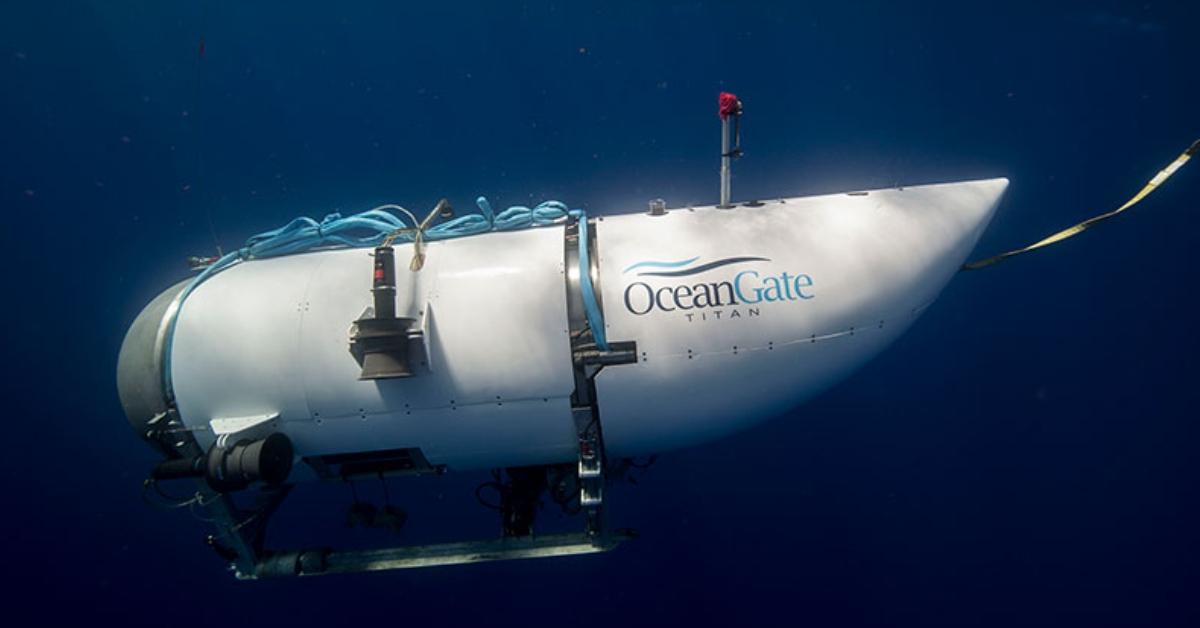The Titan, a submersible, went missing in June 2023 while exploring the Titanic shipwreck site. Here’s what we know about its disappearance.
Oh, how we wish this was a movie and not real life. But unfortunately, it’s real and five people’s lives were on the line.
On June 18, 2023, a private company called OceanGate, located in Everett, Wash., set out on an expedition to explore the Titanic shipwreck site, where the luxury steamship tragically sank on April 15, 1912, after hitting an iceberg.
Article continues below advertisement
The exploration was carried out using a submersible named the Titan, which ultimately lost communication with its mother ship about an hour and 45 minutes after it began its dive. What followed was an intense search to find the sub and bring these folks home alive before their oxygen supply ran out.
So, you may be wondering: How did the Titan even disappear in the first place? Here’s what we know.

Article continues below advertisement
How did the Titan submersible go missing in the first place?
The Titan was lost approximately 900 miles east of Cape Cod, Mass., in the North Atlantic, in water with a depth of about 13,000 feet. Equipped with 96 hours of oxygen, it began its expedition on Sunday for a trip to the wreckage site of the Titanic. The trip was only supposed to last a few hours.
Clearly, things didn’t go as planned. But how and why?
Well, for starters, OceanGate is a fairly new company and didn’t even start the Titanic wreckage expeditions until 2021. It conducted one expedition that year and another in 2022. This current expedition was only the Titan’s third visit to the Titanic wreckage site.
Article continues below advertisement
Before OceanGate even launched the Titan, there were safety concerns raised by leaders in the submersible craft industry.
In 2018, over three dozen leaders in the submersible craft industry signed a letter to OceanGate, that warned the company of its “experimental approach.” In the letter, which has since been obtained by The New York Times, these experts claimed there were potential “catastrophic” problems with the submersible’s development and the planned voyage to the Titanic wreckage.
Article continues below advertisement
It remains uncertain to what extent OceanGate took these concerns into consideration.
As to why the Titan just vanished just shortly after beginning its exploration, Jim Bellingham, a Johns Hopkins University expert on deep-sea operations, speculated that there were three possibilities as to what happened, according to USA Today.
He said it could have been floating on the ocean’s surface after an electrical failure or some other mishap. The Titan could also have become buoyantly neutral, meaning it could be drifting anywhere between the surface and the ocean’s bottom. And lastly, the Titan could have gotten caught on something which would have prevented it from floating to the surface.
Article continues below advertisement
So, did they find the submarine?
The Coast Guard confirmed on June 22 that the five passengers were dead after the submarine imploded. Debris was found by some people in the search effort and it was later confirmed that it came from the Titan, reports USA Today.
The Titan ended up being found incredibly close to the Titanic. We don’t know if this means that the passengers ended up seeing the Titanic or if the debris just ended up sinking and settling by the ship. In fact, the debris was only 1,600 feet away from the ship.
Article continues below advertisement
What happens when a sub implodes?
Both experts and the general public were speculating on a few different ways the passengers may have died. With limited oxygen, food, and other supplies, running out of resources was a real possibility. Plus, combusting, system failure, and crashing were also concerns.
However, it has now been confirmed that the submarine did implode. What exactly does that mean?
Article continues below advertisement
An implosion means that something collapses in on itself. In this case, the submersible would have collapsed under pressure, killing any passengers inside quickly.
“The pressure down there at 4,000 meters is pretty high. About 5,800 PSI at Titanic depth,” scientist Steve Somlyody told Fox News. “If they had any kind of leak, it would lead to an implosion and it would happen in an instant, very immediately.”
He also explained that the passengers on board wouldn’t even know it was happening.
Searchers heard banging sounds near where the Titan went missing.
In an internal email sent to the Department of Homeland Security leadership and obtained by Rolling Stone on June 20, the department shared that crews heard banging sounds in 30-minute intervals while searching the area where the Titan was believed to have disappeared.
Article continues below advertisement
The email mentioned the deployment of a P-8 Poseidon, a maritime patrol and reconnaissance aircraft, which has underwater detection capabilities when operated from the air. “The P8 heard banging sounds in the area every 30 minutes. Four hours later additional sonar was deployed, and banging was still heard,” the email read.
Article continues below advertisement
It was later revealed, though, that the U.S. Navy actually heard the submarine’s implosion days before the debris was found.
“A top secret military acoustic detection system designed to spot enemy submarines first heard what the U.S. Navy suspected was the Titan submersible implosion hours after the vehicle began its mission,” reported The Wall Street Journal.
That leaves the question: If the submarine imploded shortly after it embarked, what were those mysterious bangs that were heard during the search mission?
So far, that question is still unanswered.
Source: https://www.distractify.com/p/how-did-the-submarine-go-missing
